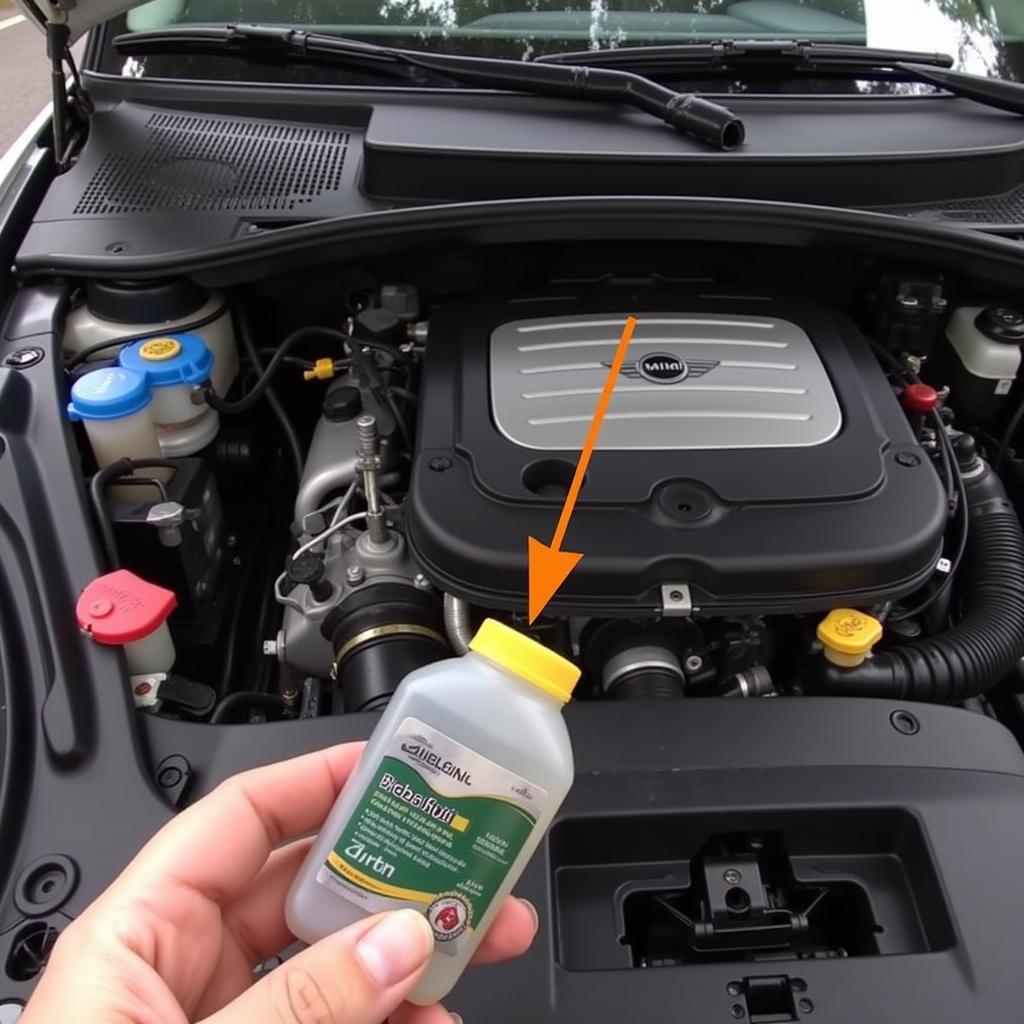The brake warning light on your Mini Cooper dashboard is a crucial safety feature that should never be ignored. When illuminated, it signals a potential issue within your braking system that requires immediate attention. This article serves as a guide to understanding the common causes of the brake warning light illuminating on your Mini Cooper and provides potential solutions to resolve the issue.
Understanding Your Mini Cooper’s Brake Warning Light
The brake warning light, often symbolized by an exclamation mark within a circle or parentheses, can illuminate for several reasons. While some causes might be minor, others could indicate a serious safety concern requiring immediate professional attention.
Here are the most common reasons why your Mini Cooper’s brake warning light might be on:
- Low Brake Fluid: This is the most frequent cause. Brake fluid is essential for transmitting force from the brake pedal to the wheels, enabling your Mini Cooper to stop. A leak in the brake lines or worn brake pads reducing fluid levels can trigger the warning light.
- Worn Brake Pads: Your Mini Cooper’s brake pads are designed to wear down over time. Most vehicles come equipped with a sensor in the brake pads that triggers the warning light when they reach a certain level of wear, signaling it’s time for a replacement.
- Faulty Brake Light Switch: The brake light switch is responsible for activating your brake lights when you press the pedal. If this switch malfunctions, it can also trigger the brake warning light.
- ABS Issue: If there’s a problem with your Mini Cooper’s Anti-lock Braking System (ABS), it can trigger the warning light. This usually points to a malfunctioning ABS sensor or a problem within the ABS control module.
- Parking Brake Engaged: Sometimes, the simplest answer is the right one. If your parking brake is even slightly engaged, it can cause the brake warning light to illuminate.
Diagnosing the Problem: Next Steps
 Checking Brake Fluid Level in a Mini Cooper
Checking Brake Fluid Level in a Mini Cooper
Determining the exact cause of the brake warning light requires some investigation. Here’s what you can do:
-
Check Your Parking Brake: Start with the easiest possibility. Make sure your parking brake is fully disengaged.
-
Inspect Brake Fluid Level: Open your Mini Cooper’s hood and locate the brake fluid reservoir. Check the fluid level. If it’s low, there’s likely a leak or your brake pads are excessively worn.
-
Visual Inspection: Look for any visible signs of brake fluid leaks around the wheels, brake lines, and near the master cylinder.
-
Consult a Professional: If you’re uncomfortable performing these checks yourself or suspect a more serious issue like an ABS problem, it’s crucial to consult a qualified mechanic immediately. Driving with a compromised braking system is extremely dangerous.
“Addressing brake issues promptly is crucial,” advises John Miller, a senior automotive technician with over 20 years of experience. “Ignoring a brake warning light can lead to more severe problems and even put you and others at risk.”
Resolving the Issue: Potential Solutions
- Adding Brake Fluid: If the brake fluid is low but you don’t see any leaks, carefully top it off to the recommended level using the correct brake fluid type specified in your Mini Cooper’s owner’s manual.
- Brake Pad Replacement: Worn brake pads require replacement. It’s advisable to replace all four brake pads simultaneously to ensure even braking performance.
- Professional Repairs: Issues like brake fluid leaks, faulty brake light switches, or ABS problems require the expertise of a qualified mechanic. Attempting to fix these issues without the proper knowledge and tools can be dangerous.
Preventing Future Issues
Regular maintenance is key to preventing brake problems. Follow your Mini Cooper’s recommended maintenance schedule, which includes:
-
Regular brake inspections
-
Timely brake fluid flushes
-
Prompt attention to any illuminated warning lights
“Preventative maintenance is the key to a healthy car,” emphasizes Miller. “Don’t wait for a problem to arise. Regular checks can save you from costly repairs and keep your Mini Cooper running smoothly.”
FAQs
Q: Can I drive my Mini Cooper with the brake warning light on?
A: While you might be able to drive a short distance, it’s strongly discouraged. Driving with a potential brake issue puts you and other drivers at risk.
Q: How much does it cost to fix a brake warning light on a Mini Cooper?
A: The cost can vary greatly depending on the underlying cause. A simple brake fluid top-up will cost significantly less than a complete brake system overhaul.
Q: How often should I get my brakes checked?
A: It’s generally recommended to have your brakes inspected at least once a year or every 12,000 miles, whichever comes first.
Conclusion
A glowing brake warning light on your Mini Cooper should never be ignored. Understanding its potential causes and taking immediate action can prevent a minor issue from escalating into a major safety hazard. Regular maintenance and timely repairs are essential for ensuring the optimal performance and safety of your Mini Cooper’s braking system. If you’re unsure about any aspect of your car’s braking system, always consult a qualified mechanic for expert advice and service.

